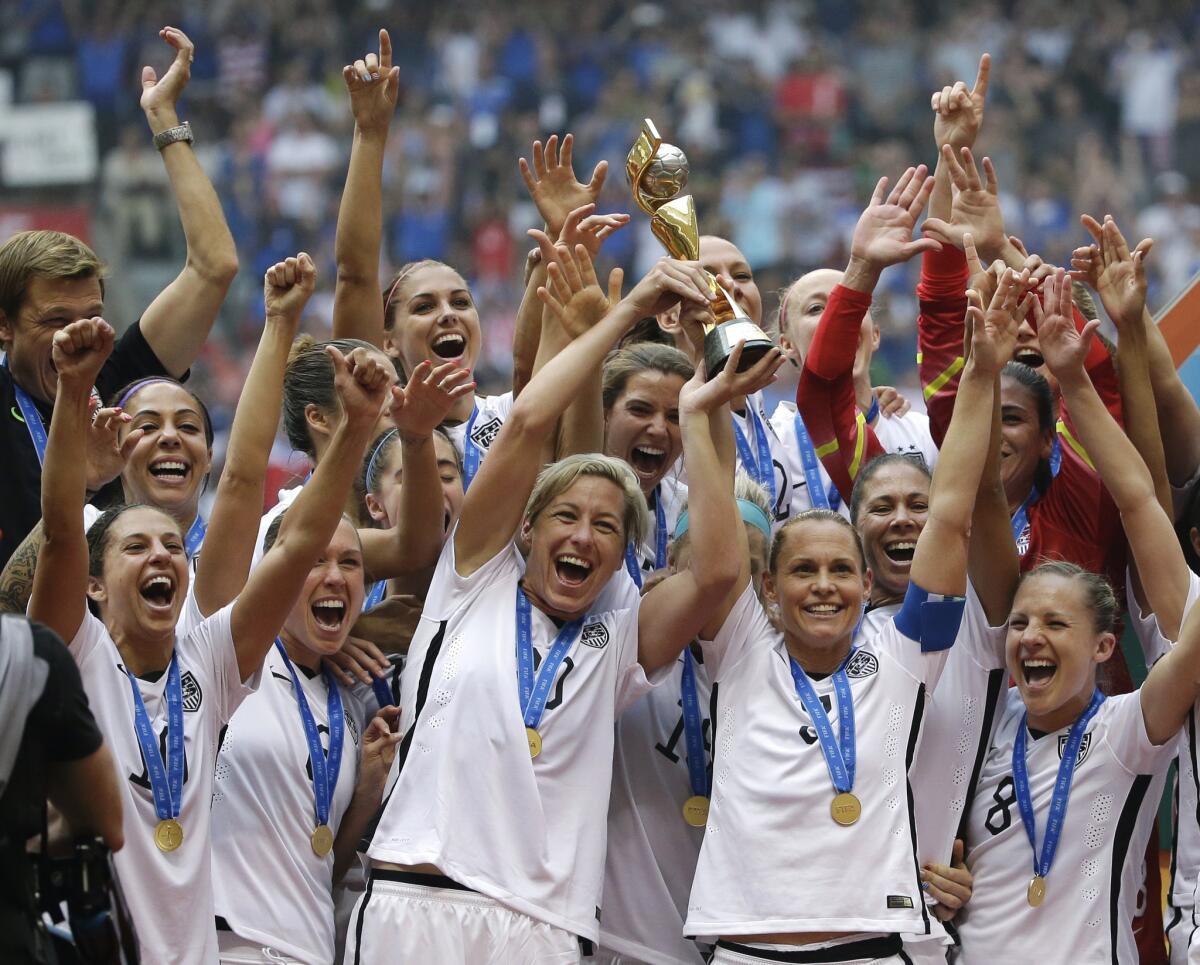Editorial: U.S. Soccer needs a yellow card for pay differences between men’s and women’s national teams

The United States Women’s National Team celebrates with the trophy after they beat Japan 5-2 in the FIFA Women’s World Cup soccer championship in Vancouver, Canada last July.
On Tuesday night in Columbus, Ohio, the U.S. Men’s National Team moved a big step closer to qualifying for the 2018 World Cup soccer tournament with a must-win victory over the visiting Guatemalan team. Few, though, think the American men will get very far in the tournament itself. In fact, the team’s best finish since the quadrennial World Cup’s infancy was a loss in the 2002 quarter-finals.
Compare that with the Women’s National Team, which has won three World Cup trophies and four Olympic gold medals (the men’s Olympic team, which is different from the national team, failed to qualify for the 2016 Games), and has been ranked number one in the world nearly continuously since 2008. The men’s national team? Ranked 30th among their gender peers, wedged between Ireland and the Cape Verde Islands. The women’s World Cup final last year, which the Americans won, set a record for American soccer viewership, and ticket sales for its domestic games have fed millions in revenues to the U.S. Soccer Federation, which oversees both teams.
Yet, according to a complaint filed with the federal Equal Employment Opportunity Commission, the women earn substantially less than their male counterparts, despite nearly identical job requirements. It’s worth noting that the complaint comes on the heels of a pay-equity controversy in professional tennis, in which the director of a tournament in Indian Wells quit after saying female players “ride on the coattails of the men.”
Though it’s hard to draw an apples-to-apples comparison because of differing remuneration agreements, members of the women’s national team can make about $99,000 if they win 20 “friendlies” — exhibition games — while the men can earn about $263,000 for the same number of appearances and wins. Even their per diem payments are different; the men receive $62.50 for domestic games, while the women receive $50.
Without addressing the specifics of the complaint, the soccer federation argued Thursday that it has advanced women’s soccer in the U.S. — it owns the professional National Women’s Soccer League — and that it is locked in contract negotiations with the union representing the national team players, five of whom filed the EEOC complaint. The two sides also are embroiled in a legal dispute over extension of the last contract, which expired in December 2012.
So is this complaint just a negotiating ploy by the players? A cynic might see it that way. But using the federation’s most recent annual report, the players lay out a pretty compelling case that their success on the field turned a projected net loss of $430,000 for both national teams into a projected $17.7 million surplus in the fiscal year that ended March 31. They’ve also generated as much revenue from national team events during recent World Cup years as the men have. That suggests a significant inequity in pay that the federation needs to address.
Follow the Opinion section on Twitter @latimesopinion and Facebook
More to Read
A cure for the common opinion
Get thought-provoking perspectives with our weekly newsletter.
You may occasionally receive promotional content from the Los Angeles Times.






